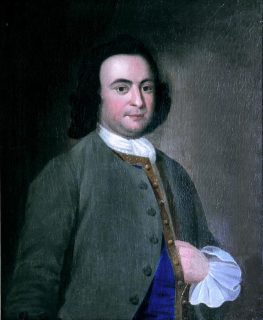
George Mason is an enigma. He looks like a conventional Virginia gentleman in this portrait, an early nineteenth-century copy of the only portrait known to have been painted from life. He devoted most of his life to his private affairs, chiefly the management of his plantation home, Gunston Hall, and to his real estate and business ventures. He rarely strayed far from Gunston Hall. Few of our revolutionary leaders are so intimately tied to a single place. Yet in that place Mason lived a life of the mind that was wholly unconventional.
Mason was a self-taught intellectual. Unlike Thomas Jefferson, John Adams and other cerebral founders, Mason was not a lawyer, and never seems to have made a systematic study of the law, at least of the kind that prepared a man to practice it. In this regard he was something like James Madison, the young intellectual who was, for a time, Mason’s protégé in the Virginia legislature. Yet Madison had a sophisticated formal education at Princeton, and stayed on after graduation to engage in post-graduate studies under the guidance of John Witherspoon. He was used to contrary views and schooled in give and take. Mason studied philosophy and law alone. He reached his own conclusions, free of challenge and without the exchanges that sharpen rhetorical skills and prepare a man to compromise.
This experience made Mason an honest and forthright scholar, but also prickly, blunt and uncompromising. He was learned but grumpy, a hard man to be close to and perhaps a hard man to like. He had a short temper which seems to have worsened with age, particularly after he developed gout. He had little patience with legislative maneuvering. He wrote to Richard Henry Lee in 1779, in a typically irascible way, about some legislation they both supported: “I understand both Bills are to be warmly opposed, & before they get thro’ our Butcher’s Shambles, the Committee of the Whole House, they will probably be mutilated mangled & chop’d to Peices.” He found the posturing of polite society boring. “I begin to grow heartily tired of the etiquette and nonsense so fashionable in this city,” he wrote from Philadelphia in the summer of 1787. “It would take me some months to make myself master of them, and that it should require months to learn what is not worth remembering as many minutes, is to me so discouraging a circumstance as determines me to give myself no manner of trouble about them.”
He was perfectly able to turn his temperamental judgments against himself. He was the chief advocate for requiring federal congressmen to be at least twenty-five. In his notes on the debates in the Federal Convention, James Madison recorded that Mason had said that “he would if interrogated be obliged to declare that his political opinions at the age of twenty-one were too crude and erroneous to merit an influence on public measures,” adding that “it had been said that Congress had proved a good school for our young men. It might be so for any thing he knew but if it were, he chose that they should bear the expense of their own education.”
In 1750 Mason was not yet twenty-five—and so by his own estimation, too young for any public trust—when he married Ann Eilbeck and had John Hesselius paint their wedding portraits. Hesselius (1728-1778) was an itinerant artist who painted portraits, chiefly of Maryland and Virginia gentry, from about 1750 until his death. His work lacks depth. His faces are fairly generic and lack character, but he was careful to depict the details and colors of clothing—presumably his sitters’ finest—and portrayed his subjects in the elegant, genteel way that clearly pleased them.
The Hesselius portrait had apparently decayed or been damaged by 1811, when Mason’s son John had three oil-on-canvas copies of it made by Dominic W. Boudet (d. 1845). A native of France, Boudet and his father, Nicholas Vincent Boudet, operated academies offering French, dancing and art—in Richmond in 1805, Baltimore in 1806-1808, and Washington in 1810-1812. The younger Boudet subsequently worked in Philadelphia, Charleston, New York, Boston and New Orleans. The Hesselius original is lost, and probably no longer exists.